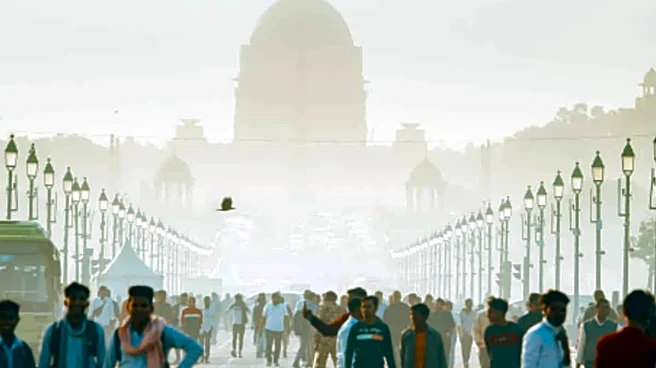The air in the national capital remains deeply polluted for the third consecutive day. The 24-hour average air quality index (AQI) stood in the “very poor” category at 347 at 6 am on Tuesday, up slightly from 309 at 4 pm on Monday.
Forecasts from the city’s early-warning system show that the situation may worsen: a western disturbance is expected to reduce wind speeds and cause stagnation, which could push the AQI into the “severe” category on Tuesday before dropping back into “very poor” on Wednesday.
Meanwhile, the monitoring data raises concerns. According to the centre’s official app (Sameer), while 38 stations were showing data at 9 pm Monday night, a few key locations were still logged in the “severe” zone (Burari Crossing at AQI 404, Vivek
Vihar at AQI 401). However, some stations had missing readings for several hours before noon — for instance, at the busy ITO traffic junction, the AQI was shown as 188 (“moderate”) but the station had hours of unreported data.
Meteorological conditions provide part of the explanation: winds that picked up to around 10 km/h on Sunday and 15 km/h on Monday helped disperse pollutants, says Mahesh Palawat of Skymet. But the incoming western disturbance will cause calm conditions on Tuesday and Wednesday, which in combination with moisture in the air will trap pollutants and lead to haze.
On Monday, the maximum temperature in Delhi reached 31.5 °C (about 1° above normal) while the night-minimum dropped to 17.2 °C (2° below normal). Forecasts suggest the maximum will hover between 28-30 °C for Tuesday and Wednesday, and minima could fall below 15 °C from Thursday onwards once the strong north-westerly winds return.


/images/ppid_a911dc6a-image-176196722986095300.webp)


/images/ppid_a911dc6a-image-176217088420914685.webp)






/images/ppid_a911dc6a-image-17621444254332693.webp)
/images/ppid_a911dc6a-image-176205052561456789.webp)

